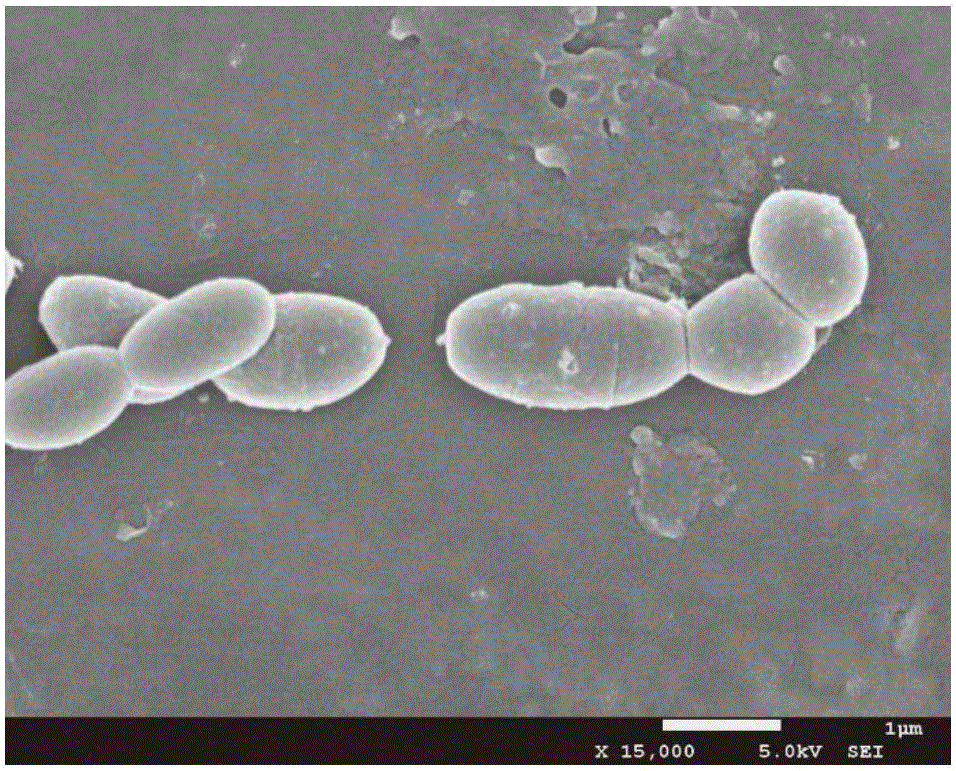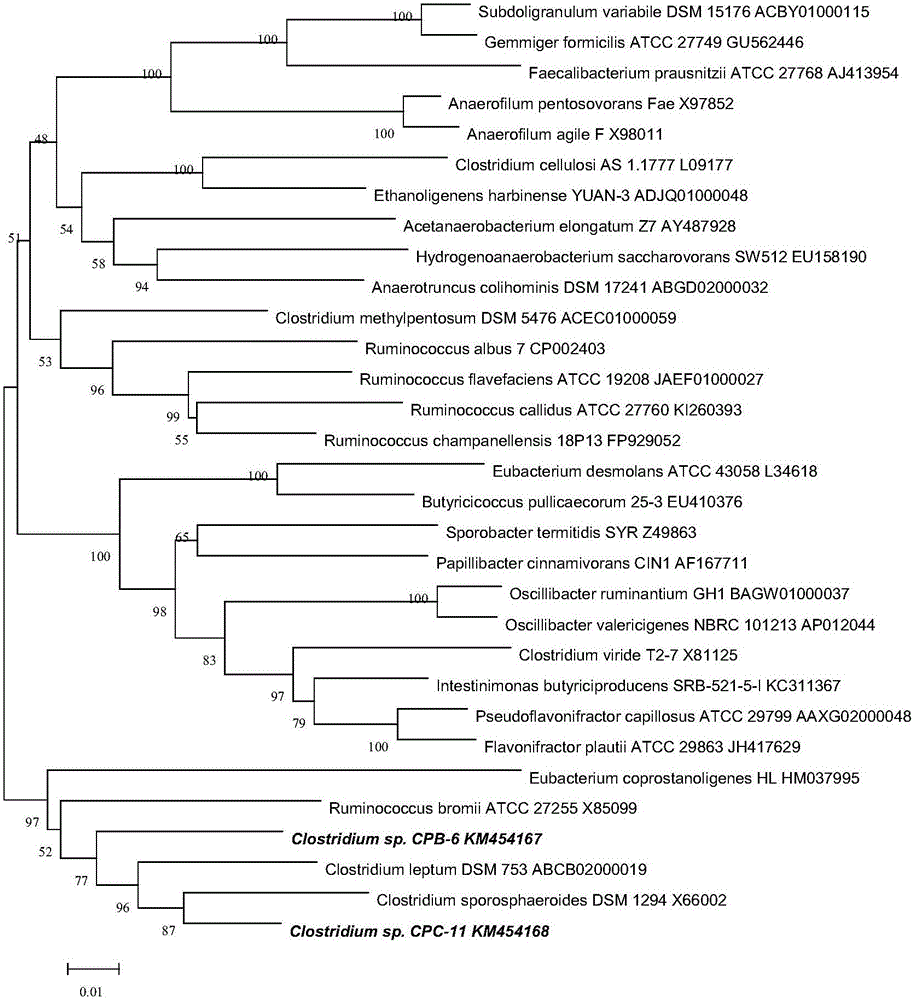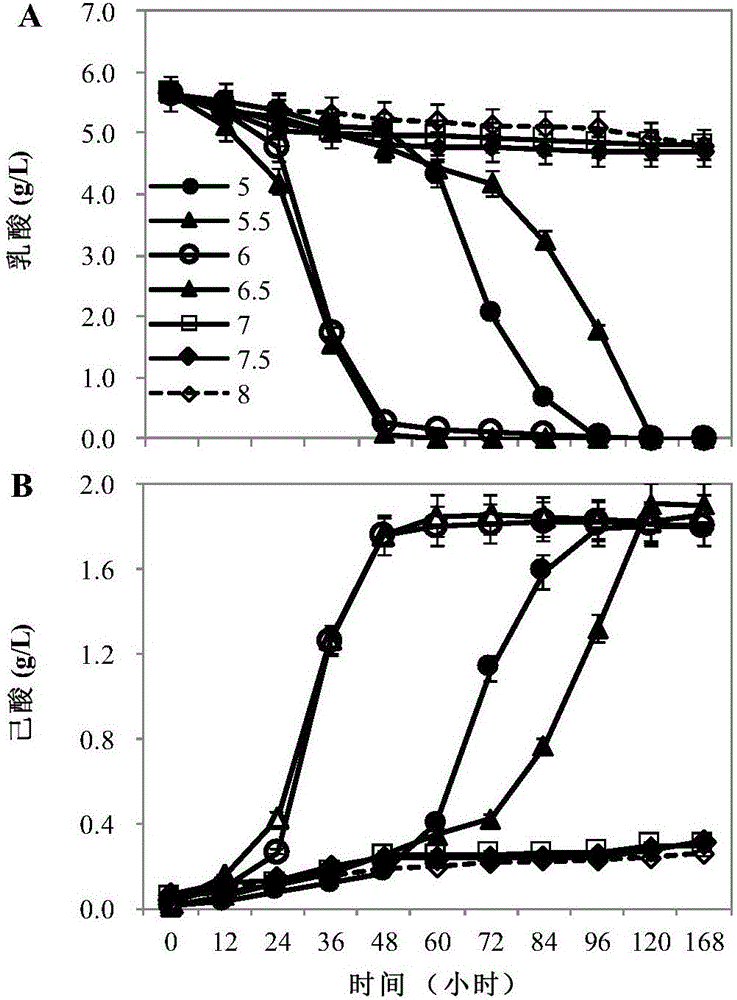Rumen bacteria and application thereof
A technology of rumen bacteria and preservation number, which is applied in the field of microorganisms, can solve the problems of low caproic acid rate and low output, and achieve the effect of realizing waste recycling and recycling
- Summary
- Abstract
- Description
- Claims
- Application Information
AI Technical Summary
Problems solved by technology
Method used
Image
Examples
Embodiment 1
[0032] Isolation, purification and cultivation of embodiment 1 bacterial classification
[0033] 1. Separation medium
[0034] Medium composition (100mL): 1g casein peptone, 0.25g yeast juice, 0.4g NaHCO 3 , 0.1g cysteine, 0.045g K 2 HPO4, 0.045g KH 2 PO 4 ,0.09g NaCl,0.009g MgSO 4 ·7H 2 O, 0.009g CaCl 2 , 0.1mg resazurin, 1mg hemin, 0.5mL lactic acid, 0.1ml trace element solution, 1ml vitamin solution. Distilled water 100ml. in:
[0035] Trace element solution (L): FeCl 2 4H 2 O 1.5g; CoCl 2 ·6H 2 O 0.19g; MnCl 2 4H 2 O 0.1g; ZnCl 2 0.07g; NaMO 4 2H 2 O 0.036g; NiCl 2 ·6H 2 O 0.024g; H 3 BO 3 0.006g; CuCl 2 2H 2 O0.002g; HCl (25% solution) 10ml.
[0036] Vitamin solution (L): p-aminobenzoic acid 0.04g; biotin 0.01g; niacin 0.1g; B 5 0.05g; B 6 0.15g; B 1 0.1g; B 12 0.05g; D.L-lipoic acid 0.03g; B 2 0.03g; folic acid 0.01g.
[0037] 2. Separation process
[0038] (1) Enrichment of strains
[0039] Caproic acid bacteria belong to Clostridium...
Embodiment 2
[0050] Characteristics and identification of embodiment 2 strains
[0051] 1. Morphological characteristics
[0052] (1) Colony morphology
[0053] The colonies are round, white raised, and sticky in texture.
[0054] (2) Cell morphology
[0055] Gram staining is positive, the bacteria are short rod-shaped, and the size of the bacteria is 2μm×0.5μm, such as figure 1 shown.
[0056] 2. Physiological and biochemical characteristics
[0057] Using Biolog AN MicroPlates TM The characteristics of the bacteria are shown in Table 1 and Table 2 through analysis with API 20A anaerobic identification system.
[0058] Table 1 Biolog characteristics of strain CPB6
[0059]
[0060]
[0061] Table 2 API characteristics of strain CPB6
[0062]
[0063] 3. Molecular biological characteristics
[0064] The whole genome of CPB6 was sequenced through the bacterial Pacbio platform, and the whole genome map of CPB6 was obtained. The length of its 16SrRNA gene is 1511bp, and the ...
Embodiment 3
[0070] The influence of embodiment 3 initial pH value on CPB6 producing hexanoic acid
[0071] From image 3 It can be seen that when the pH is 5-6.5, the hexanoic acid content of the strain increases significantly; and when the pH is greater than 7.5, almost no hexanoic acid is produced. When the pH is 5.5-6, the ability to produce acid is the strongest, and the pH is 5.5-6 is the best.
PUM
| Property | Measurement | Unit |
|---|---|---|
| Gene length | aaaaa | aaaaa |
Abstract
Description
Claims
Application Information
 Login to View More
Login to View More - R&D
- Intellectual Property
- Life Sciences
- Materials
- Tech Scout
- Unparalleled Data Quality
- Higher Quality Content
- 60% Fewer Hallucinations
Browse by: Latest US Patents, China's latest patents, Technical Efficacy Thesaurus, Application Domain, Technology Topic, Popular Technical Reports.
© 2025 PatSnap. All rights reserved.Legal|Privacy policy|Modern Slavery Act Transparency Statement|Sitemap|About US| Contact US: help@patsnap.com



